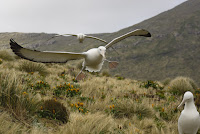Africa's Endangered Coral Reefs
 |
| Africa Coral Reefs |
Large population centers near eastern and southern Africa's coasts has led to silting of reefs, pollution by nutrients that lead to algal growth that smothers the coral; and over-fishing has led to the degradation of reef habitats and the increase in the number of predators that eat corals. Due to Climate Change, cyclones destroy reefs and warming of the ocean causes corals to sicken and die. Even a rise of one degree in the average water temperature can hurt the coral.
Of the coral reefs in eastern Africa, they stretch from Somalia to Mozambique. Off the coast of Somalia, there are small coral reefs in Raas Khanzir, Raas Shuhda, Siyara, off Al Girdi and west of Berbera. With the long and the continuing conflict and instability in Somalia, there are no proper statistics on the condition of the country's coral reefs. Coral reefs along the coastline of Kenya, Tanzania, and northern Mozambique, form an almost continuous fringing reef - one of the largest of its kind on Earth. Along Mozambique's coast, mangroves, coral reefs and sea grass beds provide food and habitat for marine life, including seabirds and nesting sea turtles. Mozambique is taking steps, by creating a Marine Protected Area (MPA) in the Primeiras and Segundas Archipelago off the northern coast of the country to protect their reefs and coastal mangrove forests, but with intensification of oil and gas exploration and drilling along its coast; and the expanding fishing and tourism industry - can the country effectively manage?
In Madagascar, the Toliara Reef System, extending for almost 320 km (200 miles) with more than 6,000 species recorded living in it - is the third largest such system in the world. It is one of very few places in the world inhabited by the coelacanth, a four-million-year-old species of fish. Here too, increasing human activities: population growth, uncontrolled fishing, industrial trawling and Climate Change - all mainly man-made, are all threatening the survival of the Island's coral reefs. South Africa’s coral reefs stretch for approximately 150 km (94 miles) along the northern KZN (KwaZulu Natal) coast from north of Cape Vidal to the Mozambique border. The reefs are separated into three groups called the Northern, the Central and the Southern Complex and are situated in the Maputaland Marine Reserve and St Lucia Marine Reserve. Combined these two marine parks form the UESCO Heritage Site - iSimangoliso Wetland park and due to the high biodiversity has been proclaimed a World Heritage Site. All of South Africa’s coral reefs are in a Marine Protected Area (MPA) which has very much helped in making them the least destroyed on the continent. Still, even with its outstanding conservation measures - South Africa's reefs are threatened by human impact, fishing and industrial activities in particular.
Organizations such as UNEP, the WCS, Oceana and WWF are working with partners at local, national regional and international levels to secure a healthy environment for coral reefs. Such organizations are conducting research, studies and mapping of Africa's reefs. They are determining how human communities living adjacent to reefs in eastern and southern Africa adapt to the impacts of climate change. When reefs die off, their valuable fish stocks disappear and tourism earnings decrease. In addition, researchers are finding ways to help reduce the negative impacts of climate change. Internationally, there are several research projects and studies on how to save the endangered coral reefs around the world. From studying seagrass which may reduce the acidity of water around reefs, protecting them from erosion; to finding means and ways of fighting the crown-of-thorns starfish which is the main danger to the Great Barrier Reef. Several international action-plans, programmes and laws are presently being enforced. But, even more important: nations, communities and individuals must take much more responsibility in managing and saving these, one of kind world treasure: Coral Reefs.
+ Map from Grida
+ UNEP
+ Reef Base
+ Reef Resilience
+ WCS


